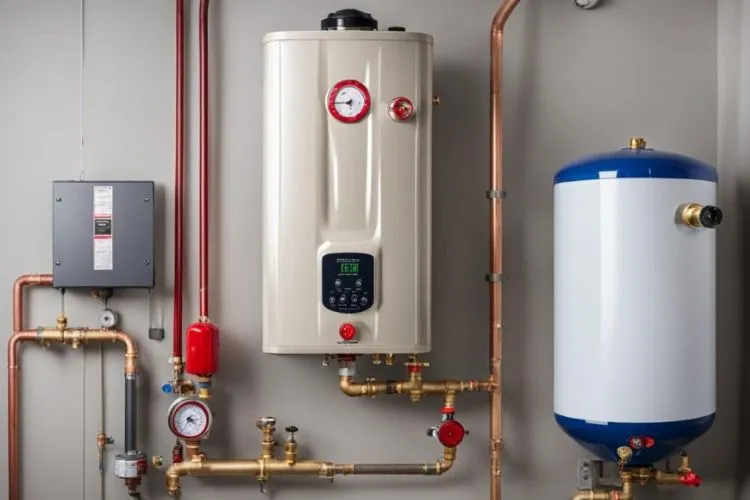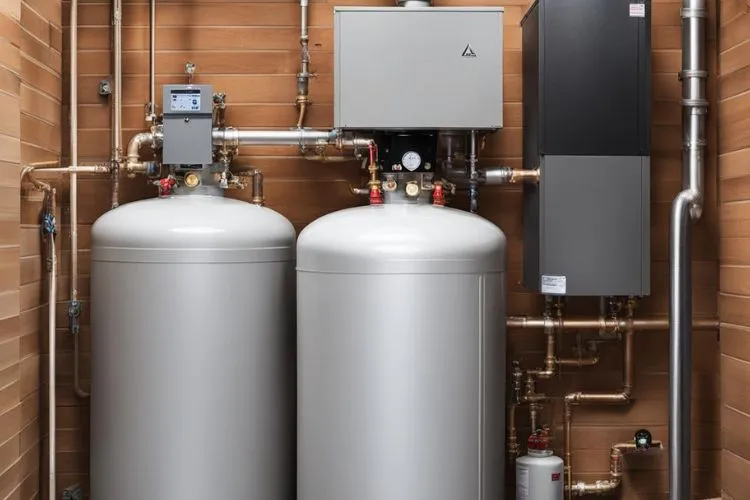With the growing shift towards energy-efficient appliances, tankless water heaters have emerged as a popular choice for many households.
These systems offer the allure of endless hot water, a smaller footprint, and lower operating costs.
However, one question often arises: do tankless water heaters need expansion tanks?
This article delves into the mechanics of tankless water heaters, the role of expansion tanks, and whether the two are a necessary pair.

Understanding Tankless Water Heaters
Tankless water heaters, often referred to as on-demand water heaters, heat water directly without the need for a storage tank. When a hot water tap is turned on, cold water travels through a pipe into the unit, where a gas burner or electric element heats the water.
This means that tankless water heaters provide hot water only as it is needed, avoiding the standby energy losses associated with storage water heaters.
The difference between tankless and traditional tank-based heaters lies in their approach to heating water. Unlike tank heaters that store and continuously heat water, tankless systems significantly reduce energy consumption by heating water on demand.
This not only offers a continuous supply of hot water but also boasts advantages such as longer life spans and space-saving design.
The Role of Expansion Tanks

Expansion tanks serve a vital role in water heating systems. They are designed to handle the expansion of water as it heats up, preventing increases in pressure. Without a way to manage this pressure, the system could face damage, including to the water heater, pipes, and other fixtures.
Expansion tanks help avoid these issues by absorbing the excess pressure, thus safeguarding the heating system and the home’s plumbing network.
Tankless Water Heaters and Pressure Issues
Tankless water heaters typically experience less pressure issues than their tank-based counterparts due to their on-demand functionality. However, the question of pressure management still exists.
As water heats up, it expands, and this expansion needs to be accommodated to maintain the integrity of the plumbing system.
Do Tankless Water Heaters Need Expansion Tanks?
The necessity of an expansion tank with a tankless water heater largely depends on the specific setup and local building codes. Manufacturer recommendations and local regulations should guide this decision.
For homes with a closed plumbing system, where backflow into the main supply line is prevented, an expansion tank may be indispensable. This setup increases pressure within the home’s plumbing when water expands upon heating.
In some situations, even if the initial setup does not strictly require an expansion tank, the use of accessories like recirculation pumps or check valves might create a closed system scenario. In these cases, incorporating an expansion tank becomes crucial to maintaining a safe and efficient system.
Local regulations also play a significant role. Some areas have explicit codes that mandate the use of expansion tanks with tankless water heaters. It’s essential for homeowners to consult with professionals to understand the specific needs based on their home setups and comply with local codes.
Benefits of Installing an Expansion Tank with Tankless Water Heaters

While not always mandatory, there are benefits to installing an expansion tank with a tankless water heater. For systems that may occasionally face pressure issues due to a closed plumbing setup or other factors, an expansion tank can offer peace of mind by preventing potential damage.
It can also contribute to the system’s overall efficiency and longevity, ensuring that the tankless water heater operates within safe pressure levels. Safety is another significant benefit, as managing system pressure correctly helps avoid the risk of leaks or bursts in the plumbing.
Installation and Maintenance
Installing an expansion tank in a system with a tankless water heater should adhere to specific guidelines. It is typically mounted on the cold water supply line near the heater.
Proper installation is crucial for the expansion tank to function correctly and requires a clear understanding of the system’s requirements, including selecting the right size and type of expansion tank.
Maintenance of the expansion tank is also essential for ensuring its longevity and optimal performance. Regular checks can help identify issues such as waterlogging or failure of the internal bladder—common problems that can affect the tank’s ability to manage pressure.
Homeowners should look out for signs of malfunction, such as visible leaks or a noticeable increase in system pressure.
Pro Tips
Choosing the right expansion tank involves understanding the capacity of the water heater and the specifics of the plumbing system. Avoid common mistakes such as undersizing the tank or bypassing local codes and regulations.
A professional consultation can help avoid these pitfalls.
Frequently Asked Questions (FAQs)
What happens if you don’t install an expansion tank with a tankless water heater?
If your system requires an expansion tank due to pressure issues and one is not installed, it could lead to damage to the water heater, plumbing fixtures, and pipes due to unmanaged pressure increases.
Can installing an expansion tank extend the life of a tankless water heater?
Yes, by managing the pressure and avoiding stress on the system, an expansion tank can contribute to the longevity of a tankless water heater.
How do I know if my plumbing system is open or closed?
An open system allows water to expand back into the public water supply, while a closed system prevents this. Check valves, pressure reducing valves, or backflow preventers usually indicate a closed system.
Conclusion:
The question of whether tankless water heaters need expansion tanks has a multifaceted answer. It depends on the specific plumbing setup, local regulations, and the presence of factors that might create a closed system.
While not always a requirement, the addition of an expansion tank can offer significant benefits in terms of safety, efficiency, and system longevity.
Homeowners are encouraged to consult with professionals to assess their individual needs and ensure their system is set up for optimal performance.


